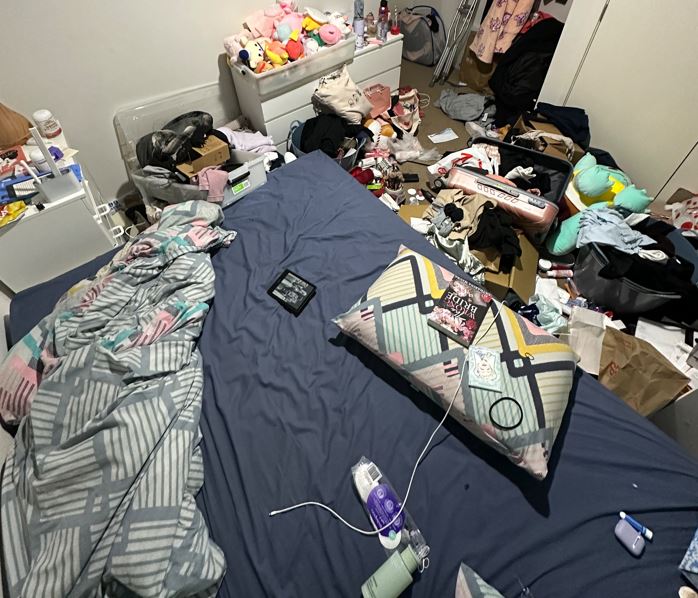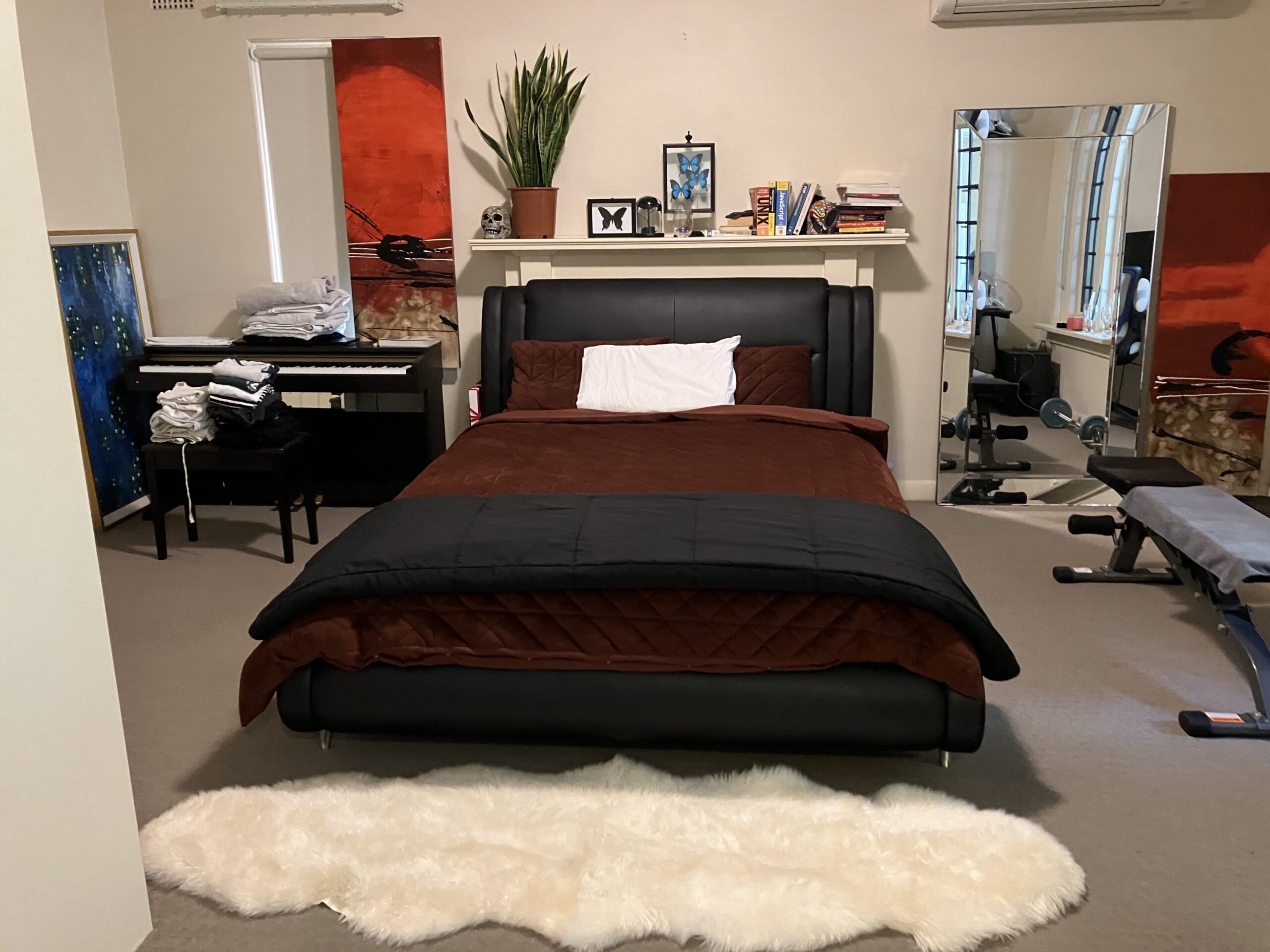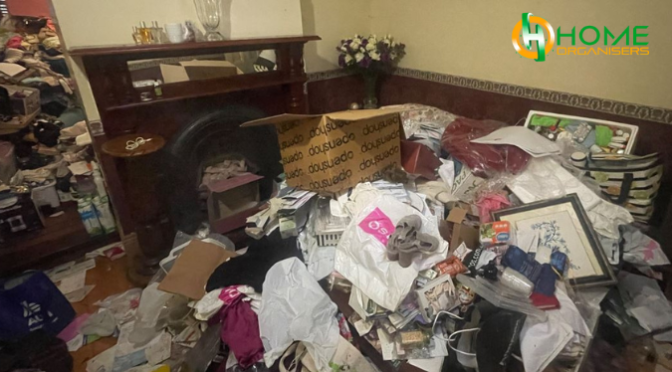Most people have clutter somewhere in their homes—a messy drawer, an overflowing wardrobe, or a stack of old papers on the dining table. But for some, clutter takes over the whole house. In extreme cases, it blocks doorways, covers furniture, and fills every room from floor to ceiling.
When this happens, it’s more than just a mess. It’s called hoarding, and it’s essential to understand that hoarding is not a choice. It’s not laziness, and it’s not about being messy or disorganised. Hoarding is often linked to trauma, mental health struggles, and emotional pain. To truly support someone with hoarding, we need to understand what’s happening beneath the surface.
Hoarding and Mental Health
Hoarding is now recognised as a mental health disorder. People who hoard often feel extremely anxious or distressed about throwing things away, even items most of us consider rubbish. To them, every item might hold meaning, memories, or comfort. Getting rid of these things can feel like losing control, or even losing a part of oneself.
Many people who hoard have experienced trauma, such as abuse, neglect, the sudden death of a loved one, or a significant life change. Hoarding can be a way to cope with these difficult feelings. Keeping things can feel like staying safe, in control, or connected to better times.
In some cases, hoarding is also linked with anxiety, depression, obsessive-compulsive disorder (OCD), or attention-deficit/hyperactivity disorder (ADHD). These medical conditions affect how people think, feel, and act.
This connection between trauma and hoarding is now better understood, especially within the context of NDIS hoarding behaviours, where individuals may require tailored support services to live safely and independently.
The Emotional Impact of Hoarding
Living in a home filled with clutter is incredibly stressful. It can create feelings of shame, guilt, sadness, and hopelessness. Many people feel embarrassed about their homes and avoid having visitors. Some isolate themselves from friends and family. They may also feel trapped – they know they need help, but feel too overwhelmed to ask for it.
Hoarding can make daily tasks like cooking, cleaning, sleeping, or even walking through the house difficult. Over time, this affects a person’s confidence, independence, and self-worth.
The Effect on Family and Relationships
Hoarding affects more than just the person collecting the items—it often causes tension in families and relationships. Partners, children, and other loved ones may feel helpless, frustrated, or angry. They may not understand why the person won’t just “throw things away.”
It’s important to remember that hoarding is not about stuff – it’s about what the stuff represents. It can feel like a personal attack when someone feels forced to part with their items. This can lead to arguments, broken trust, and strained relationships.
Children growing up in a hoarder’s home may feel ashamed, anxious, or neglected. In severe cases, hoarding can lead to intervention from local councils or community services if the home becomes unsafe.

Clutter and Physical Health
A cluttered home is not just emotionally draining—it can also be dangerous to your health. Clutter can attract pests like cockroaches, mice, or mould, which can trigger allergies and asthma. Blocked walkways increase the risk of falls or injury. Occasionally, hoarded items can be flammable or block emergency exits, increasing the risk of serious accidents.
Many people who hoard avoid using parts of their home altogether. They might sleep on the couch because their bedroom is full or use takeaway food because the kitchen is unusable. Over time, this can lead to poor diet, hygiene issues, and declining physical health.
How Hoarding Affects Mood and Productivity
It’s hard to feel calm, focused, or positive when you’re surrounded by a mess. Clutter can create mental noise – a constant reminder of unfinished tasks, guilt, and pressure. This leads to decision fatigue, anxiety, and reduced ability to concentrate.
For many, clutter causes feelings of failure. They may believe they’re lazy, weak, or incapable, even though they’re often doing their best just to cope. This negative self-talk can keep people stuck in a cycle of stress and overwhelm.
A clear, organised space can lift your mood, improve sleep, and boost your ability to get things done. But for someone living with hoarding behaviours, achieving this kind of environment takes support, not judgement.
The growing awareness around mental health clutter helps more people understand that clutter can stem from emotional and psychological struggles, not poor habits.
The Financial Cost of Hoarding
Hoarding can also affect a person’s financial wellbeing. Some spend money buying duplicate or unnecessary items because they’ve lost track of what they already have. Others may face fines or property damage from clutter-related issues like pests, mould, or fire hazards.
If someone avoids letting repair workers, inspectors, or landlords into their home, small problems can become big ones – and expensive to fix. In some cases, hoarding has led to eviction or legal action.

Clutter Is a Symptom, Not the Problem
It’s easy to look at a cluttered house and say, “Just clean it up.” But that’s like seeing a fever and saying, “Just cool down.” The clutter is a symptom – the root problem is often deep emotional pain, unprocessed trauma, or an untreated mental health condition.
This is why traditional cleaning methods often don’t work. Forcing someone to part with their possessions without understanding the emotional connection can make things worse. It can feel like a loss of control or even a personal attack, leading to more distress – and more hoarding in the future.
A Compassionate Approach Is Key
Supporting someone with hoarding behaviours takes empathy, patience, and care. It’s important to approach the situation gently and respectfully. Some steps that can help include:
- Listening without judgement
- Avoiding pressure to “throw things away”
- Working with the person, not against them
- Celebrating small wins and progress
- Involving a mental health professional
- Getting help from trained organisers who understand hoarding
At Home Organisers, we take a trauma-informed approach to hoarding clean-ups. That means we focus on safety, trust, and respect. We understand the emotional weight that clutter can carry, and we work side by side with our clients to create a plan that feels manageable and supportive.
Our goal is not just to clean a space, but to help create a healthier, safer, and more peaceful home environment – one step at a time.

Healing Is Possible
If you or someone you love is living with hoarding challenges, please know that you are not alone and that it is not your fault. Hoarding is a condition that can be treated with the right care and support.
Healing doesn’t happen overnight, but it is possible. With gentle guidance, understanding, and professional help, people can reclaim their homes, routines, and sense of self.
Clutter is not a choice. But asking for help is – and it’s a brave one.
Ready to support a loved one or reclaim your space?
Contact us today on 03 8583 9103, email nancy@homeorganisers.com.au, or visit homeorganisers.com.au for compassionate, expert help with hoarding clean-ups.


